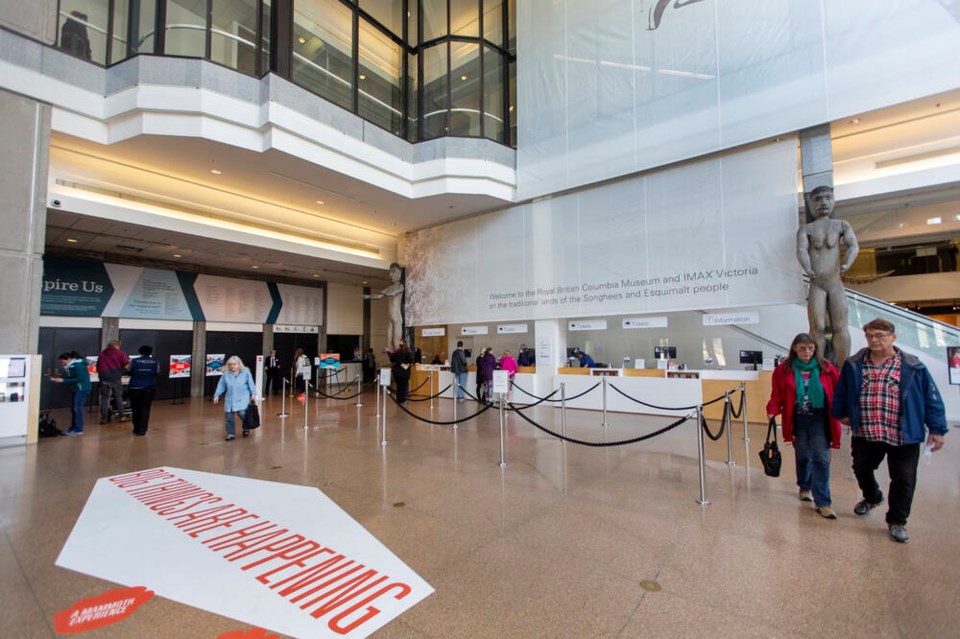I support the new Royal B.C. Museum project. I worked in the public sector for three decades, constructing schools, hospitals, post-secondary buildings across British Columbia — the vast majority of those projects finished within their budgets and schedules.
I was a member of the museum project steering committee in the early stages of planning for redevelopment.
Yes, the RBCM project is expensive, but so are many other building projects at this time. The redevelopment of the museum is long overdue, and the RBCM has had to wait in lieu of investments in other projects such as schools, hospitals, roads and bridges.
I support the government giving the public a better explanation of why a new museum is needed, including the poor condition of the existing building; how susceptible the RBCM is to a major earthquake; the renovation-versus-new building comparison; how the project costs are estimated; how the project is phased; the time and costs to properly box and relocate thousands of rare objects; and how difficult it is to keep a building open and functioning during the construction process.
A better job needs to be done making the public case for the project. The information is readily available, but has not been packaged well for public consumption. The project is still needed, as are other important investments in public-sector infrastructure.
I do not support calls to cancel the project; that would be opportunistic, shortsighted, and repeats the mistakes of past governments. I do not accept that costs for the RBCM project will spiral out of control.
In my experience, costs escalate when the planning process has been rushed to meet an artificial deadline, or where there has been interference in the normal planning and construction process.
Public service staff closely examine the auditor general’s reports about major capital projects to ensure mistakes are not repeated, and planning processes are improved for future projects.
I know my former government colleagues are working hard to ensure that the RBCM project costs are properly estimated and public funds are invested prudently.
Many capital projects are completed within budgets and schedules due to the hard work of experienced public servants — but that does not make for exciting media headlines.
When planning has been done properly with contingency cost estimates and good management, projects tend to complete within their budget and schedule.
From my understanding, the team working on the RBCM project are experienced, professional staff doing a thorough job of planning through a very complex, but doable, project.
Like other jurisdictions, British Columbia has significant gaps in modernized infrastructure that need to be closed. Those gaps did not happen overnight, nor will they be closed overnight.
Calls for project cancellations, be they museums, tunnels or bridges, simply add to our infrastructure gap and makes the cost of that work more expensive when it is inevitably undertaken.
The RBCM is entrusted to be the caretakers of all aspects of our provincial heritage. The reality of that task is that the RBCM has vastly outgrown its space and needs a significant redevelopment.
If the museum has a major water leakage, or seismic failure, it will no doubt be criticized by British Columbians for not taking the proper care of our collective heritage.
At some point during a typical week, there are several busloads of children touring the museum. During those times, the museum is effectively an elementary school, but it is an elementary school with a high degree of seismic risk in the event of an earthquake. Governments make significant investments in seismic upgrading at schools — we need to show the same duty of care to occupants of the museum.
Keeping a complex building like the RBCM open during construction is a punishing experience on visitors and staff due to noise, dust and general disruption.
A decision has been made not to subject that to visitors and staff and to close the building during the redevelopment process. That decision needs to be better explained to the public.
There are numerous functional deficiencies at the museum that prevent it from achieving its potential as a major Canadian museum. These deficiencies are not easily corrected within the existing building. This needs to be better explained to the public.
Relocating displays and artifacts in the RBCM is not an easy task. Objects have to be handled correctly, hundreds of specialized moving boxes must be obtained and packed. Proper storage of fragile artifacts has to be done in climate-controlled, secure environments, which has a cost. This needs to be better explained to the public.
Some will ask how can we invest in a new RBCM when many people go without a family doctor. While this is an emotional comparison, it is not a realistic comparison in the way that all governments work.
That is like comparing apples (borrowed money for construction) to oranges (annual operating money for doctors) — those are two different things. Rather than do one or the other, we need to find ways of doing both simultaneously.
Investment in cultural preservation will almost always be seen as frivolous when compared with needs for more affordable housing, schools, health facilities, roads, highways and bridges.
If this is not the right time to redevelop the RBCM, then when will it be the right time? British Columbia is unlikely to ever reach a point where we can say: “OK, now it’s time to do the RBCM.” We have to be capable of doing multiple investments simultaneously.
As an observer, I think the main issue is a recent failure to clearly communicate a complex project to the public, and that needs to be corrected.
We need to undertake the RBCM development alongside our other project needs for schools, hospitals, post-secondary education, affordable housing, roads and bridges to narrow our infrastructure gap for all British Columbians.



